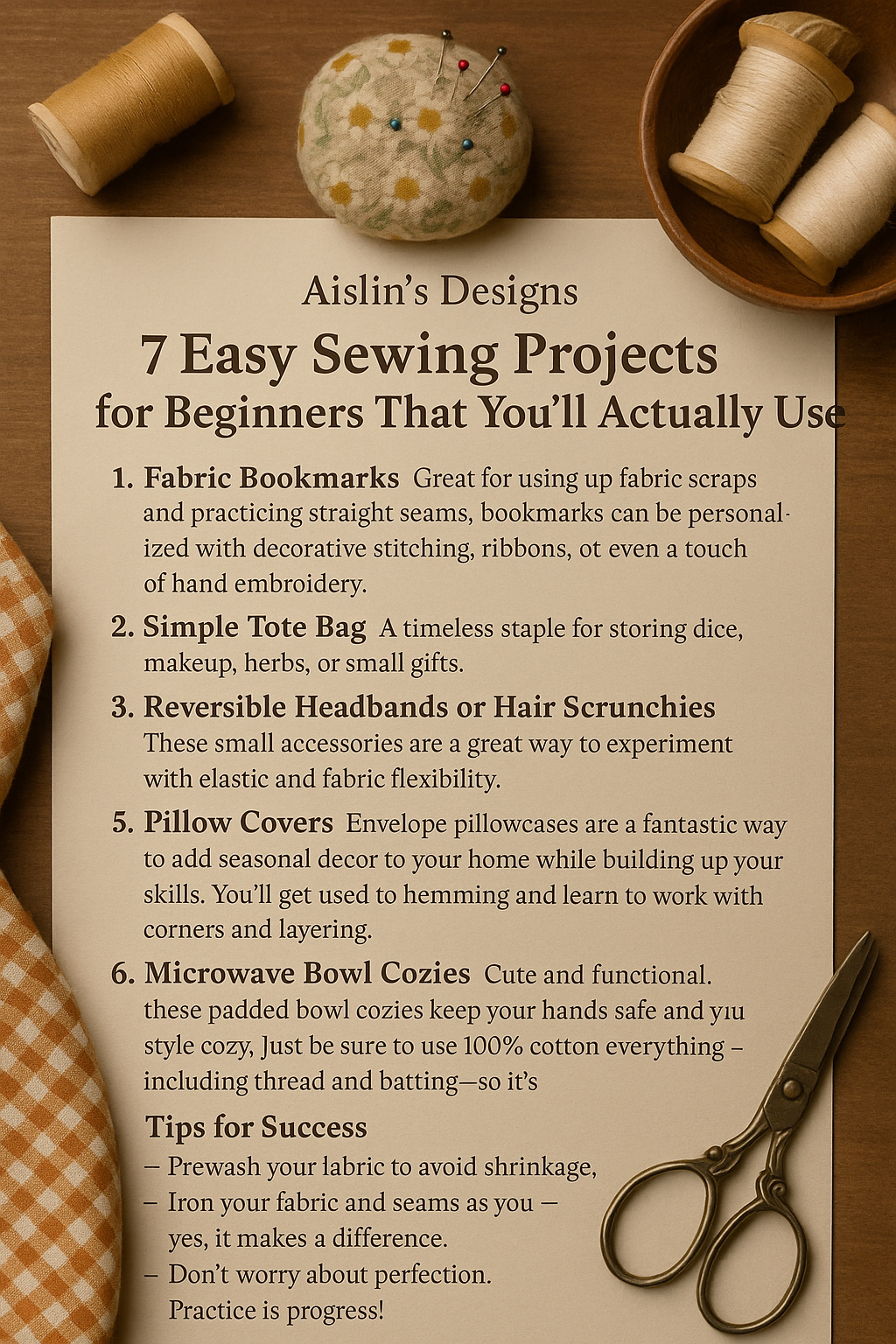Are you just getting started with sewing or looking for a few quick wins to build your confidence? Whether you're working with a brand-new machine or dusting off one that's been in the closet for years, diving into beginner sewing projects can be exciting, rewarding—and even a little magical.
At Aislin’s Designs, we believe handmade is heart-made. Here are 7 simple and practical sewing projects that are perfect for beginners and guaranteed to bring beauty and usefulness into your daily life.
1. Fabric Bookmarks
Great for using up fabric scraps and practicing straight seams, bookmarks can be personalized with decorative stitching, ribbons, or even a touch of hand embroidery.
2. Drawstring Bags
A timeless staple for storing dice, makeup, herbs, or small gifts. Drawstring bags are beginner-friendly, teach you about casing and seams, and are endlessly reusable.
3. Simple Tote Bag
If you can sew a straight line, you can sew a tote! A basic tote introduces box corners and gives you a practical result you’ll want to use every day—from library trips to yarn runs.
4. Reversible Headbands or Hair Scrunchies
These small accessories are a great way to experiment with elastic and fabric flexibility. Plus, they're fun to gift or swap with friends.
5. Pillow Covers
Envelope pillowcases are a fantastic way to add seasonal decor to your home while building up your skills. You’ll get used to hemming and learn to work with corners and layering.
6. Microwave Bowl Cozies
Cute and functional, these padded bowl cozies keep your hands safe and your style cozy. Just be sure to use 100% cotton everything—including thread and batting—so it’s microwave-safe!
7. Pin Cushions
Make them square, round, or novelty-shaped. Pin cushions are a great way to try stuffing techniques and small-scale sewing, and you’ll use them constantly in your sewing journey.
Tips for Success
- Prewash your fabric to avoid shrinkage.
- Iron your fabric and seams as you go—yes, it makes a difference.
- Don’t worry about perfection. Practice is progress!
Final Thought
Sewing is a skill built stitch by stitch. Whether you’re crafting with a purpose or just enjoying the rhythm of the needle, every handmade project tells a story. Start small, stay curious, and let your creativity bloom—one project at a time.
Happy stitching,
The Aislin’s Designs Team



